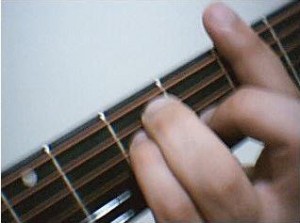How To Read Guitar Tabs
Traditional music notation may be more technically accurate, but tabs are pretty much the default way of displaying music for the guitar. Not only are they simpler to understand, they’re also much easier to create with standard word processing software – leading to a boom in user-generated guitar tabs. If you’re not familiar with the basic idea of tablature, learning the basic principles behind it, how to read it and where to find user-created tabs gives you the fundamental knowledge you need to explore the world of guitar music. Guitar tabs do have their limitations, however, so it’s much more effective to use instructional videos with supplementary written content, because this helps to address the issues with conveying timing in the form.
Guitar Tab Basics
Guitar tabs don’t use the musical notes you might envision to get the information across. Instead of the five-line stave, tabs are built on six horizontal lines which represent the string you play the note on, rather than which note it is. The lowest-pitched string (the thick E string closest to you when you’re playing) is the lowest horizontal line on the tab, and the strings get progressively higher-pitched as you move upwards (so the A string is above the E, then the D string, and so on right up to the thin, high-pitched E string at the top).
Numbers are used in guitar tabs to tell you which notes to play, but you don’t need to know which note you’re actually playing. Of course it helps to understand the relationship between positions on the guitar fretboard and the notes, but you don’t need to understand it. The numbers simply tell you which fret to play on the specific string, with a “0” to represent a string played “open” (with nothing fretted), a “1” for the first fret (which sits between the nut and the first metallic fret marker), a “2” for the second and so on. Play this basic pattern to get used to reading tablature.
e—————————————–0–2–3–
B——————————–0–1–3———–
G————————–0–2——————–
D——————–0–2————————–
A———–0–2–3——————————–
E–0–2–3—————————————–
Guitar tabs can also include chords or groups of notes played together, and these are shown by putting them in a vertical line. You play tabs like you read, from left to right, so if some notes are in a column, they must be played together. Sometimes, however, the names of accompanying chords are shown above the tab itself.
Finding Tabs
User-created guitar tabs have the advantage of being widely available and generally free, but since they can be created by anybody you can’t always rely on accuracy. One of the most popular sites offering guitar tabs is Ultimate Guitar, and you can find tabs for pretty much any popular song there. Additionally, the ranking system gives you a general idea of how accurate the specific tab is, and at very least the tab should get you in the right ballpark for playing the song.
The Limitations of Guitar Tabs
Aside from the problems with inaccuracies in guitar tabs mentioned above, there is also a general problem with conveying timing. Although the timings can be approximated using the distance between two notes as shown on the tab or their positions within a bar, traditional music notation has a more complicated system which enables notes to be played in perfect timing even by somebody who’s never heard the song before. Guitar tabs are inherently flawed in this way, and the issues are even more pronounced if the writer of the tab hasn’t taken care with the spacing between the notes and you’re unfamiliar with the song. This is why professional guitar instruction websites usually combine tabs with standard music notation – it gives you so much more useful information.
The Advantages of Video Lessons with Tabs
Guitar tabs survive because they’re so much easier to understand, and the simplest way to get around the inherent problems is to listen to the song itself before you try to play it. Video lessons are the ideal accompaniment to tabs, because they not only let you listen to the song played at speed, they give you valuable tips for playing a particular song or exercise which can’t be contained within the tab itself. It can also help you learn to read guitar tabs if you listen to an expert play it and “follow along” on the tab. If you’re serious about learning guitar, the combined video and guitar tabs approach is undoubtedly the best way to go.
Conclusion
They might appear initially confusing, but guitar tabs are an exceptionally player-friendly method of displaying guitar music. Using the tips you’ve learned above, you can understand tabs, find the music for your favourite songs and learn the instrument more effectively, but you should keep adding to your knowledge. Sometimes, for example, additional symbols are used, but there’s almost always a key so you’ll know what you have to play. So, get out there and start learning some songs!
About The Author
James Harper works for Guitar Tricks. Founded in 1998, Guitar Tricks was the Web’s first multimedia guitar lesson site. 15 years later, Guitartricks.com features over 40 guitar instructors continuously creating a massive library of online video guitar lessons (8000+) covering every musical style, technique, and level of ability.
Check out our recently updated Guitar Toolbox, featuring our Ultimate Scale Finder, Ultimate Chord Finder, and Reference Tuner.


Leave a Reply